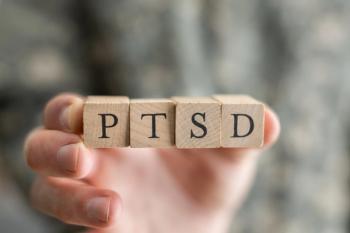
- Vol 32 No 12
- Volume 32
- Issue 12
Delayed Suicides of “The Forgotten Battalion”
On the heavy cost of savage warfare and its aftermath.
COMMENTARY
In 2008, the Second Battalion of the Seventh Marine Regiment was deployed to root out an entrenched Taliban occupation of mountainous territory in Afghanistan. The environment was unremittingly harsh; enemy resistance implacably fierce. Combat conditions couldn’t have been more unfavorable from every strategic and logistic perspective. The battalion was strung out in small outposts like the frontier forts and outposts of the Old West Indian wars. Viable connecting roads were virtually absent. The Marines endured daily attacks on their positions as well as close engagements with the Taliban in nearby villages.
Savage warfare and its aftermath
During 8 months of savage warfare, the “2/7” killed hundreds of hostiles. The group also sustained more casualties than any other unit in the mountains from incessant firefights, bombardments, and devastating landmines seeded throughout the landscape.
After returning to the States, the soldiers remaining in service and the majority who returned to civilian life inevitably suffered from symptoms of PTSD. Suicidal thoughts were common among those worst afflicted.
Suicides occurred during the first year after deployment and relentlessly continued over the subsequent 7 years. According to a trenchant New York Times
[[{"type":"media","view_mode":"media_crop","fid":"43294","attributes":{"alt":"Marine_©KelsieTaylor-Shutterstock.png","class":"media-image media-image-right","id":"media_crop_726410906690","media_crop_h":"0","media_crop_image_style":"-1","media_crop_instance":"4937","media_crop_rotate":"0","media_crop_scale_h":"133","media_crop_scale_w":"200","media_crop_w":"0","media_crop_x":"0","media_crop_y":"0","style":"float: right;","title":"Marine_©KelsieTaylor-Shutterstock.png","typeof":"foaf:Image"}}]]Some of the 2/7’s suicidal Marines were obviously troubled from the moment they set foot on American soil. Their lives quickly spiraled into the depths of depression, hallmarked by alcoholism/substance abuse, employment difficulties or inability to work, family problems culminating in divorce, and pervasive estrangement from all social relationships. But as the years passed, even vets whose civilian adjustment was exemplary committed suicide. These men had been notably resourceful and courageous in battle; at home, they enjoyed satisfying family and social lives, good jobs, and excellent educational prospects. The mounting death toll was already frightening enough to the 2/7 vets.
Why would such stalwart comrades decide to kill themselves after years of apparent tranquility? I’ll return to the possible reasons for the delayed suicides presently.
Extreme situations
Sociologists call man-made catastrophes like virulent warfare and natural disasters like Hurricane Katrina “extreme situations.” As with their civilian counterparts, the intensity and causes of PTSD in survivors of extreme combat situations vary considerably. Each case is as unique as a fingerprint. Severity depends-inter alia-on the nature, degree, and duration of trauma. Survivor guilt may figure prominently, as well as the role of innate vulnerability through nature or nurture. The latter’s importance is not always appreciated: many participants in extreme situations, in war or civilian life, emerge with few immediate symptoms and recover psychic equilibrium quickly. However, it is difficult to imagine that any survivor of the 2/7’s 8-month ordeal could emerge psychologically unscathed. Historian Paul Fussell, writing about the extreme combat he experienced during World War II’s Pacific campaign, observed that all of his fellows must have been driven a little mad-if temporarily so.2
The 2/7 Marines’ resilience was sapped day after day by close engagements on post and in the nearby villages, as well as ear-shattering barrages from afar. (Blast injury is an often-overlooked ingredient in PTSD.) Food, water, and ammunition were often scanted, not only because of the terrain’s inaccessibility, but also because crucial supplies were being diverted to the more newsworthy Iraq theater. In any case, outfits like the 2/7 were put in harm’s way without adequate logistic support for the first time in our country’s history. This sorry state of affairs was, in my view, a direct consequence of Donald Rumsfeld’s misguided concept of a leaner, meaner Army.
Research indicates that the direst PTSD is often precipitated by human rather than natural or accidental agency. In the 2/7’s hermetic setting, intense bonding between outpost troopers was crucial to maintaining a semblance of normality. Yet at any moment, one’s comrade could be blown to pieces by shelling or horribly mutilated by a landmine. One conjectures that ravages wrought upon the enemy, salted by revenge, were no less potent a source of PTSD on the spot, and later on.
Inability to tell whether a villager was friend or foe rendered civilian casualties and deaths inevitable-especially in the context of the Afghani culture’s utter “otherness” mentioned
PTSD symptoms frequently worsen when a veteran feels rawly plunged into civilian life. Reading between the lines, one gets the sense that some of the traumatized vets Phillips describes suffered existential disorientation, as if there had been a tectonic shift in the expectable world. This was accompanied by an aching aloneness-even the desire to go back to the dreadfully familiar killing fields of Afghanistan.
Psychological autopsies
During my service as an Army psychiatrist at Fort Lewis, Washington, I was tasked to perform “psychological autopsies” on Post suicides-exploring the soldier’s life at home and on duty; conducting intensive interviews of family, fellow soldiers, and officers. As far as I can determine-and I would happy to be informed if I’m wrong-no such research is being conducted by the military and the US Department of Veterans Affairs (VA) into early or delayed suicides of vets who have undergone extreme conditions of harrowing combat in Iraq and Afghanistan. Hence, I can only offer speculations from anecdotal evidence-accounts like Phillips’ as well as my own and other military psychiatrists’ clinical findings. One theorizes that the 2/7’s early suicides stemmed from an idiosyncratic conflation of the above causes, articulated with whatever native vulnerabilities a soldier brought to combat.
Why an apparently well-adjusted vet would commit suicide years down the line is a particularly vexing question. Paradoxically, a reasonably stable survivor might be better able to suppress traumatic experiences-until long-standing denial becomes no longer possible for a secretly tortured psyche. Scarifying memories sufficient to cause delayed suicide may re-emerge in the context of some obvious present-day event or an unrelated traumatizing current occurrence-such as the death of a parent or a serious accident.
Phillips observes that the suicide of a fellow vet in itself composed a particularly potent “tipping point” for the 2/7 Marines. This point might also be precipitated by a seemingly minor reference to any conflict-a scene in a film about World War II, a TV drama about the Vietnam conflict, or a Civil War novel.
The 2/7 vets began to feel they were palpably stalked by death, that it was only a matter of time before the death they owed caught up to them (the Final Destination movies come to mind). Suicide in this context can be construed as a pre-emptive strike: the vet “takes charge” of his inevitable demise rather than passively waiting for it.
Phillips notes the particularly devastating impact on his fellows by the suicide of a Marine who performed intrepidly under fire, then seemed supremely contented years after returning home. One argues that a poorly functioning comrade who already viewed himself as damaged goods might conclude that if such a redoubtable comrade could commit suicide, there was even less hope, let alone wish, for him to keep struggling on.
Profound existential dislocation
I’ve mentioned the profound existential dislocation of many vets. Phillips adroitly captures the 2/7 Marines’ belief that even their dearest ones could not begin to comprehend what they had endured, hence their prizing the special bond with those “who had been through it all.” Might a vulnerable vet, witnessing the escalating suicides of his comrades-in-arms over the years, fantasize that killing himself would allow him to renew the fellowship in death with those he so cherished in life? Suicide compelled by the yearning to join a departed beloved has often been addressed in the literature.
A major cause of delayed suicide in the military requires no speculation-the abysmal failure of the armed services as well as the VA to identify and treat survivors of brutal combat with suicidal potential, especially after discharge. Our government claims to have spent millions on this score, with more millions to come. Yet, as far as I have been able to determine, the Marines keep little or no information about such vulnerable survivors. Nor does the military at large share with the VA any relevant statistics that do exist.
The 2/7 told Phillips that even when a post-traumatized, potentially suicidal vet overcame his substantive native denial and sought VA treatment, he often faced interminable delay, then received grossly flawed help. For instance, an incredibly naive young therapist told a Marine tormented by the loss of his friends that he should simply liken their deaths to breaking up with a high-school sweetheart. A “gold standard” treatment strategy apparently is to encourage the recollection of scarifying combat experiences in aid of a wholesome abreaction. This is surely a cure worse than the disease, akin to compelling rape and torture victims one hardly knows to relive their traumas. Toxic cocktails of multiple psychotropics were routine, causing greater suffering.
Many vets who later committed suicide had quit such botched care in disgust, seeking surcease in the grave. Phillips indicates that even when vets were able to rescue a potential suicide through social networking, he would be sent to a VA facility to receive the same glaringly ineffective therapy.
The forgotten battalion
Men of the 2/7 now call themselves “the forgotten battalion.” In fact, they have been doubly abandoned: first in combat, by the military that regularly withheld even a modicum of living and fighting materiel; then, after returning home, by a profoundly flawed health care system.
Bathetic “wounded war” concerts and other treacly celebrations of patriotic gore cannot redeem our government’s appalling relinquishment of responsibility on these scores. The Marines of the “Forgotten Battalion,” living and deceased, are victims of a purposeless war, without victory other than surviving their hellish tour-only to revisit the murderous mountains of Afghanistan in their nightmares.
Addendum: A graphic depiction of the Afghanistan war is found in
This article was originally posted on 11/11/2015 and has since been updated.
Disclosures:
Dr Greenberg practices psychiatry in Manhattan, New York. He publishes frequently on film, media, and popular culture. For many years, his cinema column appeared in Psychiatric Times. He has appeared frequently on national and international network and cable television programs including Good Morning America, Today, CBS Evening News, and CBS Sunday News, and on PBS, CNN, Showtime and BBC-TV.
References:
1. Phillips D. In unit stalked by suicide, veterans try to save one another. New York Times. September 19, 2015.
2. Fussell P. Wartime. New York: Oxford University Press; 1990.
3. Greenberg HR. American Sniper. Psychiatric Times. March 2015;32:36.
Articles in this issue
almost 10 years ago
Introduction: A Demographic With a Challenging Set of Problemsalmost 10 years ago
Cannabis Use in Young Adults: Challenges During the Transition to Adulthoodalmost 10 years ago
Working Within a Campus Health Service: A Challenge With Many Rewardsalmost 10 years ago
Challenges of Transitioning From Pediatric to Adult-Oriented Carealmost 10 years ago
Still Practicingalmost 10 years ago
Cranial Electrotherapy Stimulation for Bipolar Depression: New Dataalmost 10 years ago
Physician Health and Professional Secrecyalmost 10 years ago
Psychiatric Care of Peripartum Womenalmost 10 years ago
No News Is Not Good Newsalmost 10 years ago
The Evil HoursNewsletter
Receive trusted psychiatric news, expert analysis, and clinical insights — subscribe today to support your practice and your patients.











